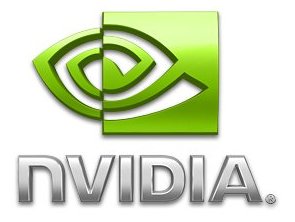Tough times ahead for Nvidia? Part two
The case for the defence

In part one of our investigation into the current health of Nvidia, we painted a pretty downbeat picture.
Nvidia's desktop and laptop chipset businesses are being pinched, Ion looks like a dead duck even as it's being launched, Nvidia's core PC graphics business is in the trenches, Tegra is a virtual non-starter and its console cash flow will die with the underperforming PlayStation 3.
But things are often not what they seem in the computer chip industry. Lest you have forgotten, 12 months ago AMD looked utterly dead in the water. Today it has arguably the best graphics chips in the world and a much more competitive CPU product in the Phenom II.
Where better, then, to get the case for the defence than Nvidia itself in the shape of Derek Perez, the company's long serving Director of PR? If Perez can't spin Nvidia's current situation into a tale of impending glory, nobody can.
The first thing Perez emphasises is that the PC industry is on the cusp of a sea change that will play directly to Nvidia's strengths.
"Applications are now appearing that really begin to leverage the parallel computing of graphics chips. Even if you take away conventional graphics processing and gaming, parallel processing is becoming the norm. And big new markets like HPC (high performance computing) in industries such as oil and gas are just starting out," Perez reckons.
Unsurprisingly, Perez says Nvidia is best positioned to cash in on this industry-wide shift towards parallel computing, or as some would have it, visual computing: "The bet about the shift towards general purpose computing on the GPU is not if, but when."
Get daily insight, inspiration and deals in your inbox
Sign up for breaking news, reviews, opinion, top tech deals, and more.
No evidence to support chipset threat
As for the threat to Nvidia's chipset business from CPU-GPU fusion chips, Perez is totally unconvinced. "There's an assumption in all of this that Intel's on-CPU graphics will be good enough. But there's absolutely no evidence to support that view," he says.
And he has a point. The history of Intel's integrated graphics cores is one of mediocrity bordering on awfulness. But isn't it hard to imagine a PC that has two integrated graphics cores - one in the CPU itself and one on the motherboard? "If we continue to innovate with great products like the GeForce 9400M, our chipset business will continue to thrive," says Perez.
But what of Ion? Surely the arrival of Intel's upcoming Moorestown system-on-a-chip replacement for the current Atom processor will kill that chipset stone dead? "Just because Intel will build it, that doesn't mean it will perform as Intel claims or that it will be what people want. How good will the graphics and audio be in Moorestown?" Perez asks.
Moreover, Perez says 40 per cent of netbook returns are from unsatisfied customers and much of that is due to poor video performance. What people need is not a better Atom processor, but a better graphics core, which is precisely what Ion delivers.
That may be true for netbooks. But Ion is not a viable alternative to Moorestown for truly compact devices. It's simply too power hungry. Which brings us neatly to Tegra, Nvidia's chip for smartphones. Perez admits Nvidia's inexperience in the mobile phone market may have led the company to underestimate the time it would take to win over the market with Tegra.
"Our PC mentality told us to think in terms of a year," he says, "but the reality for mobile phones is more like five years." Still, Perez claims we will all be able to buy a MID or phone powered by Tegra no later than Christmas this year. More importantly, he is adamant that Nvidia will announce a partnership with at least one of the big mobile phone makers within a year.
Technology and cars. Increasingly the twain shall meet. Which is handy, because Jeremy (Twitter) is addicted to both. Long-time tech journalist, former editor of iCar magazine and incumbent car guru for T3 magazine, Jeremy reckons in-car technology is about to go thermonuclear. No, not exploding cars. That would be silly. And dangerous. But rather an explosive period of unprecedented innovation. Enjoy the ride.